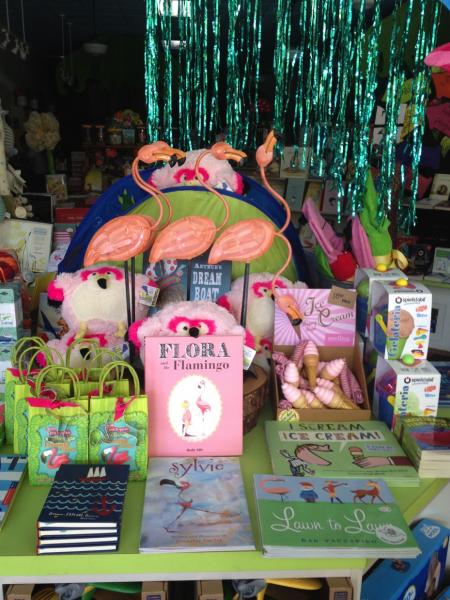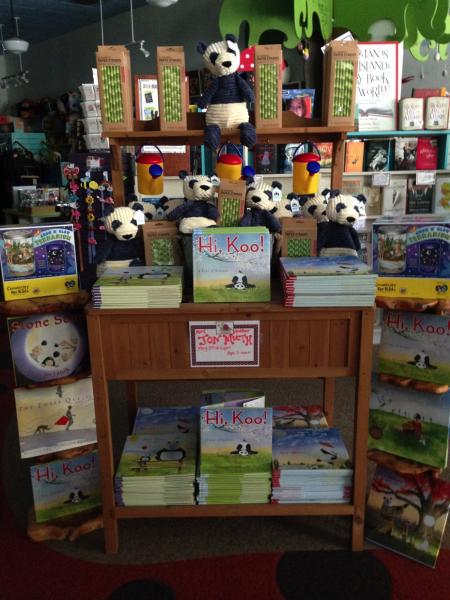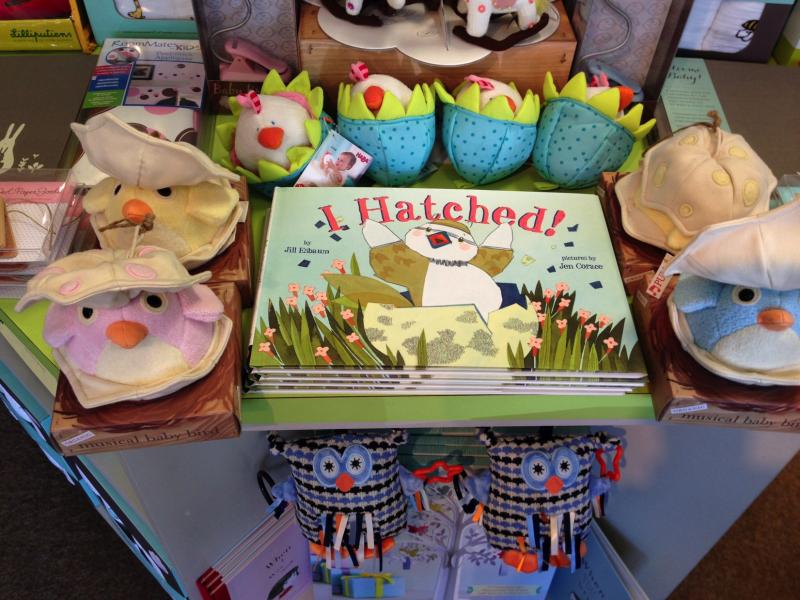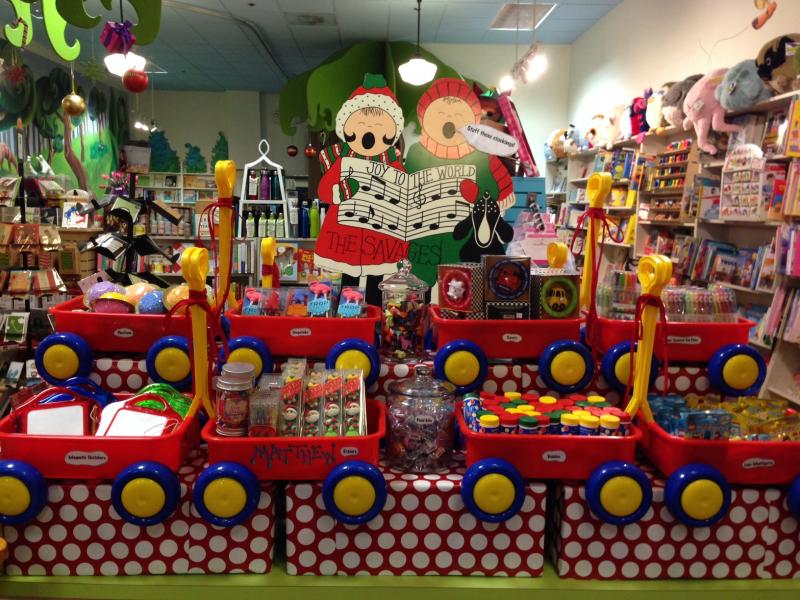Upselling for Kids: Strategies and Best Practices From Wi10
Mastering the art of the upsell is essential for children’s specialty stores and general interest bookstores alike. At the Winter Institute session “ABC Group Presents: Upselling for Kids,” booksellers heard strategies and best practices for communicating with customers about products, encouraging and training staff to upsell, and buying and displaying book and non-book pairings to maximize sales.
 The panel was moderated by Diane Capriola of Little Shop of Stories in Decatur, Georgia, and featured booksellers Amie Mechler-Hickson of Boswell Book Company in Milwaukee, Wisconsin; Lauren Savage of The Reading Bug in San Carlos, California; and Janelle Smith of Auntie’s Bookstore in Spokane, Washington.
The panel was moderated by Diane Capriola of Little Shop of Stories in Decatur, Georgia, and featured booksellers Amie Mechler-Hickson of Boswell Book Company in Milwaukee, Wisconsin; Lauren Savage of The Reading Bug in San Carlos, California; and Janelle Smith of Auntie’s Bookstore in Spokane, Washington.
Though general bookstores and specialty stores each face different challenges in merchandising for children, the goal of increasing a sale and improving the bottom line is the same, said Capriola, and it starts with how booksellers establish a rapport with customers. “We all agree that one of the most important things is earning the trust of your customer,” she said.
To hand-sell an item and successfully add on other merchandise, it’s vital to have honest conversations and to ask customers questions, said Mechler-Hickson. “Recommend things you think will work, but definitely things you believe in. That comes through and they come back.”
At The Reading Bug, a children’s specialty store, Savage has found that sharing stories about her own children has made it easier to make connections with customers so she suggests that her staff members who are parents, grandparents, aunts, or uncles share that with visitors in the store. “It’s a really good starting point,” she said.
Smith of Auntie’s encourages children’s and adult booksellers alike to ask everybody if they want help. “It doesn’t matter if they look like they know what they’re doing,” she said.“If you listen to everything that they say and don’t say, I think you can quite easily add several books that they were not looking for to their pile.”

Training staff to upsell books or non-book items on top of a customer’s planned purchase can be especially difficult when the staff is not familiar with the products in the store or specifically in the children’s section.
“One of our challenges as a general bookstore is to get more kids’ stuff in front of our general booksellers,” said Mechler-Hickson. To accomplish this, she shares children’s F&Gs or advance copies from sales reps with Boswell’s adult and children’s booksellers and welcomes recommendations on what to buy. Boswell’s also has endcaps that display a book and a plush toy to make it easier for general booksellers to find an automatic pairing.
On the one day a week that The Book Bug is closed, Savage refreshes merchandise displays to make the pairings obvious and easily accessible. She also asks staff each week to take a walk around the store to look at the new displays and pairings and to get to know what’s in the store. She sends a weekly e-mail to staff to inform them of new items arriving and has staff come up with their own pairings to increase enthusiasm.
Savage also noted that customers come to bookstores to seek expertise, so staff shouldn’t think of it as an upsell as much as curating the perfect product set. “You need to change your staff members’ minds about what they’re doing,” she said. “Your customer wants to look clever and smart when they’re handing a gift to somebody.”

To help Auntie’s staff become more familiar with the store’s children’s corner, Smith puts a fluorescent “staff favorite” marker in any book she thinks would be easy to hand-sell and encourages staff to visit the children’s section to read the highlighted books when they have downtime.
During the holidays last year, Little Shop’s Capriola offered an incentive to staff to sell merchandise that had been sitting in the store for too long. The staff split into two teams, and each member of the winning team received a $50 gift card to the local pub. “That was such a great, fun way to get them moving,” she said. “It got them thinking about how to increase the sale, how to pair these things.”
For staff members who are shy or who don’t feel as comfortable hand-selling and upselling, “I have to get out on the sales floor and set an example,” Capriola said.
Buying and displaying merchandise poses its own challenges for general interest and children’s bookstores. “As a children’s only store, I probably have a different approach because I have a lot more space to work with,” said Capriola, who buys the bulk of Little Shop’s non-book items in January, including basic necessities she knows will sell and non-book items based on the upcoming seasons and the displays she has in mind.

Smith has limited space for displaying items in Auntie’s children’s section, so she finds ways to move these items out to the front of the store. She has displayed Goodnight Moon (HarperCollins) alongside Sarah Jio’s adult novel Goodnight June (Plume) and has placed Sasquatch Band-Aids and air fresheners with The Sasquatch Hunter’s Almanac (Holt).
When buying frontlist titles, Savage keeps in mind key picture books and purchases pairings for displays while watching for upcoming trends. In terms of where to display merchandise, she suggested, “Don’t underestimate your ceiling space if you don’t have floor space or table space.”
To make use of the limited space in the children’s section at Boswell’s, Mechler-Hickson hangs toys on chains that run down the edges of bookcases and displays impulse items in the $4 to $7 price range, such as kaleidoscopes and magic wands, on a ledge that leads to the children’s section.
With so many options for non-book items available, booksellers should be sure to find quality items that parents and children will be interested in spending their money on, said Capriola. “You have to be really careful about finding quality stuff that’s the right price point.”
“It’s important to have a good range of prices,” agreed Savage, who said price point is key to upselling. “You want to find out what the average price is that people spend in your store. Know what you think they’re going to spend and take that into account before you try to give them something more expensive or less expensive.”
Some of the popular toy and non-book vendors suggested at the session were:
- Alliance Game Distributors
- Apple Park
- Babylit buttons
- Diamond Comic Distributors
- Douglas Cuddle Toys
- Fascinations
- Folkmanis Puppets
- Fred & Friends
- Funko
- Gund
- HABA
- Jellycat
- Kids Preferred
- Kikkerland
- Melissa & Doug
- MerryMakers
- The Original Toy Company
- Out of Print Clothing
- Romanoff Products
- Sock It to Me
- Toysmith
- Ty
- Uncle Goose
- WGK Glass Art
- yOttOy

